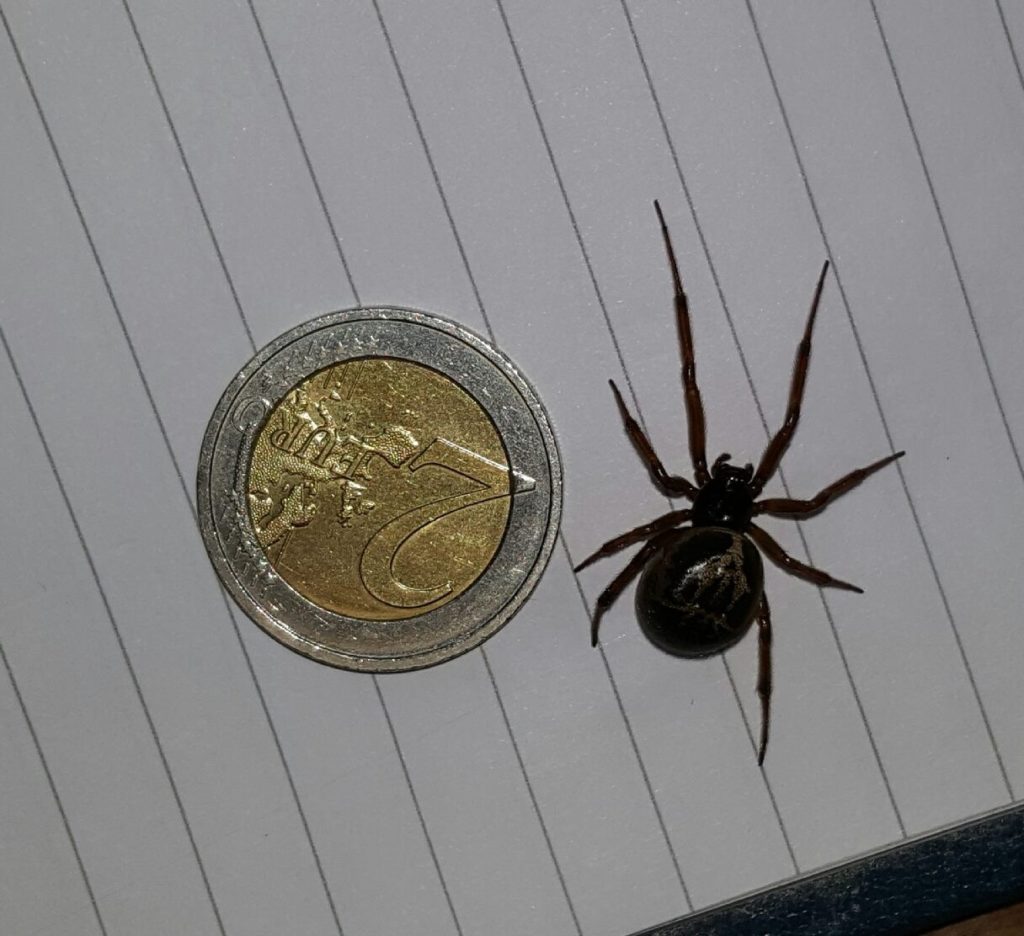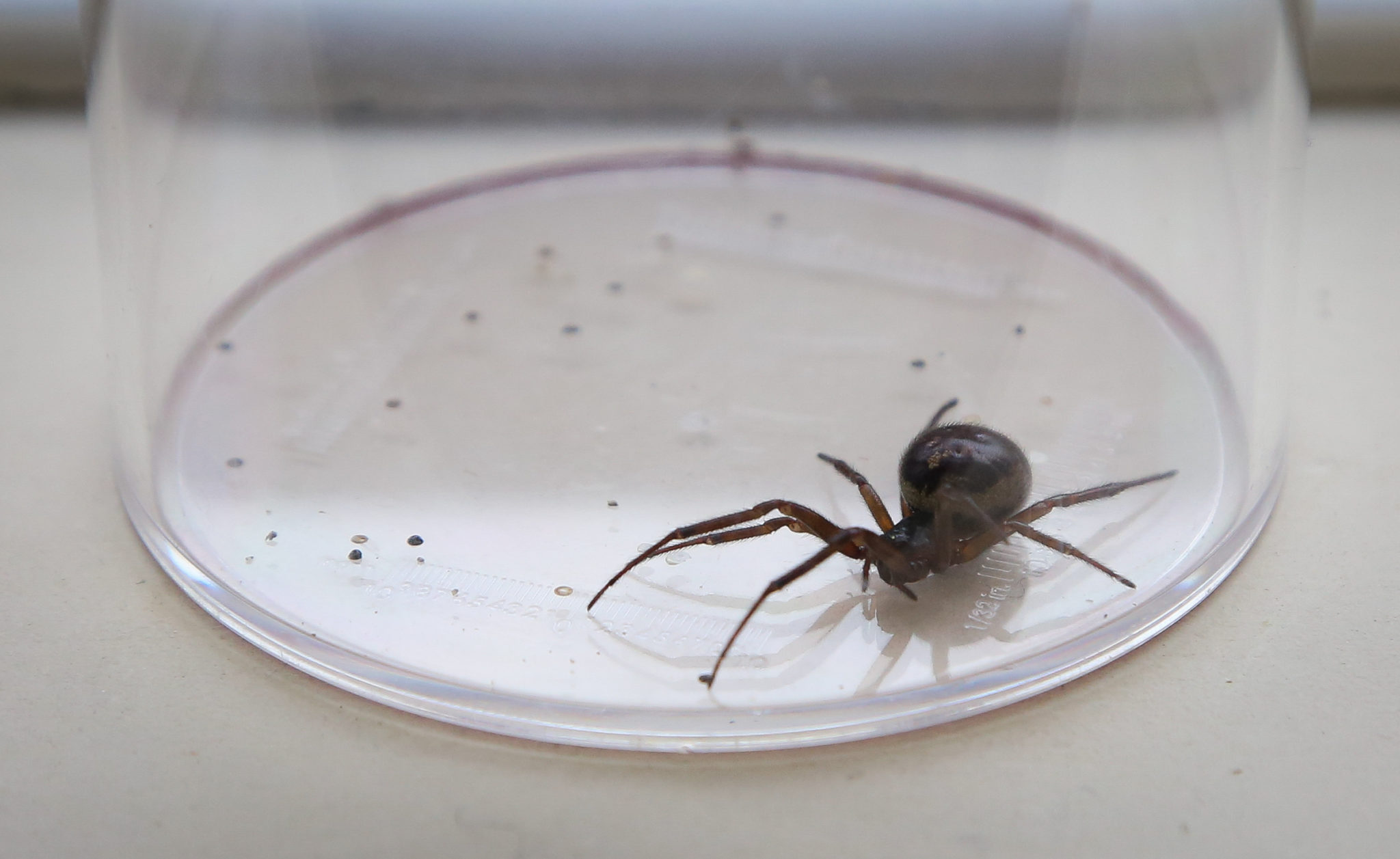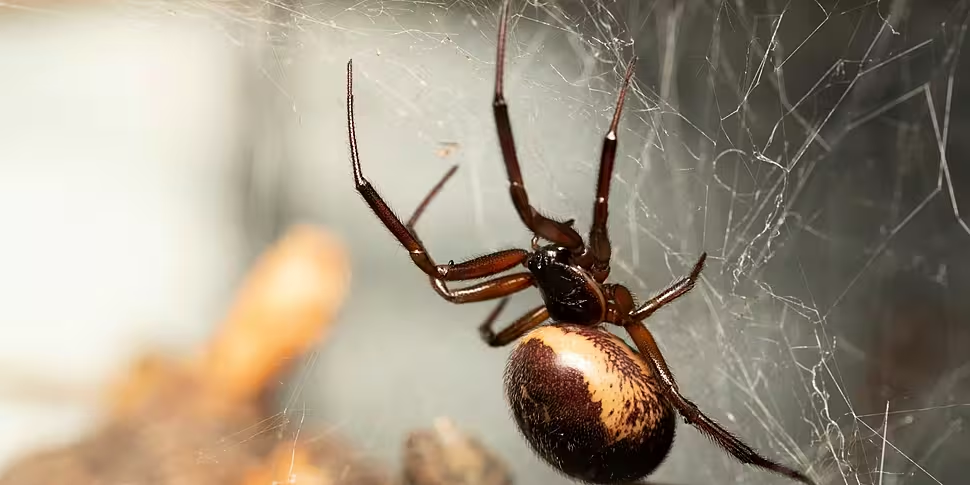False widow spiders are up 230 times more venomous than native Irish species – but experts are moving to reassure people that they’re not aggressive to humans.
A new study from NUI Galway’s Ryan Institute examines the spider’s venom potency and attack patterns to find our why it has been so successful spreading across Ireland and many other areas around the world.
Researchers sampled venom yields for 550 noble false widows for the study, published in the journal Toxins.
They found that it is up to 230 times more potent than native Irish spider venom, potentially explaining how the spiders can spread across the country so easily and take on larger species like lizards, bats, shrews, and other spiders.
On Newstalk Breakfast this morning, wildlife expert Eanna Ní Lamhna said the spiders reserve their venom for prey – and only ever bite humans by mistake.
“Look at it from a spider’s point of view,” she said.
“The spider has to make this very, very strong venom. It takes a huge amount of the spider’s resources to do this and it is using this venom in order to get food for itself.
“It ain’t eating humans so why in the name of God would it run after you and bite you just for the craic?
“The spiders are doing their own thing. They’re sitting on the gate. They want food to eat and that’s what they use their venom for. When they use a lot of venom they’re more or less defenceless, so they’re not going to waste it giving big whacks to things.”

Noble false widows generally only bite when they accidentally get caught up in clothes or if somebody rolls over them in their sleep.
Ms Ní Lamhna said false widow bites are actually relatively rare in Ireland.
“It doesn’t hunt people,” she said. “It is only if it is in your house by mistake and you sit on it or it is in your clothes and it might bite you and there are only about 100 cases in Ireland of people being bitten.
“People are not getting bitten day and night by them.”
 A general view of a False Widow Spider at Drusillas Zoo Park in Alfriston, near Eastbourne.
A general view of a False Widow Spider at Drusillas Zoo Park in Alfriston, near Eastbourne.The wildlife author said the NUIG research has nothing to do with the spider’s impact on people – and is focused on what they are doing to native Irish species.
The noble False Widow is originally from Madeira and the Canary Islands but has spread right across Ireland since they were first detected here in the 1990s.
The NUIG researchers said it has the potential to become one of the world’s most invasive species of spider.
It was first reported in southern England in 1879 and has spread northwards towards Scotland and westward through Wales and Ireland in recent decades.
The species has also spread globally across Europe, East Asia, North America, and South America.
The study pitted the spiders against different opponents to see how it would react.
It found that they are capable of make calculated decisions on whether to attack large or small prey depending on how much venom is left in their venom glands.
Over the course of the study, the false widow killed and ate 95% of the opponents it was put up against.
You can listen back here:









